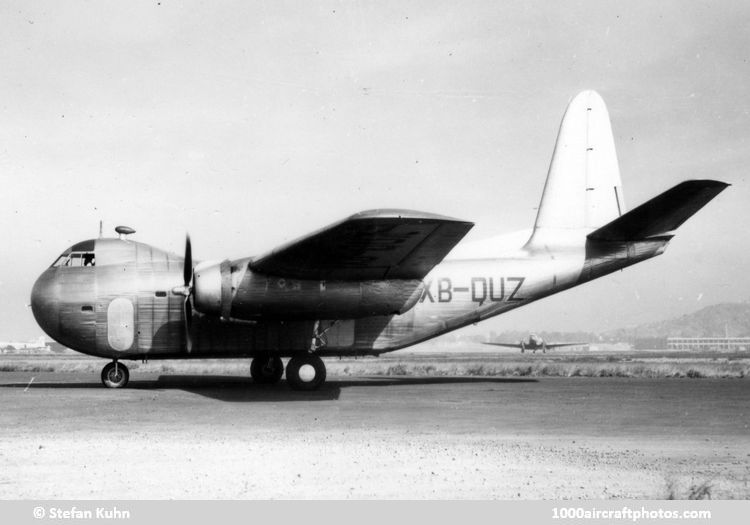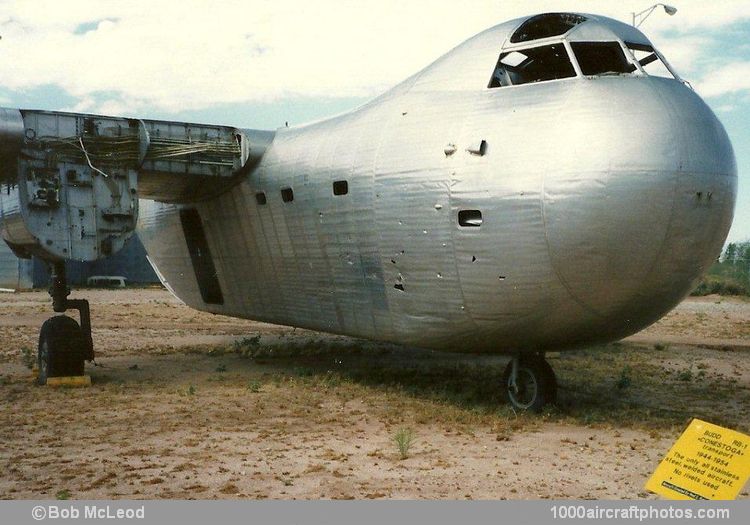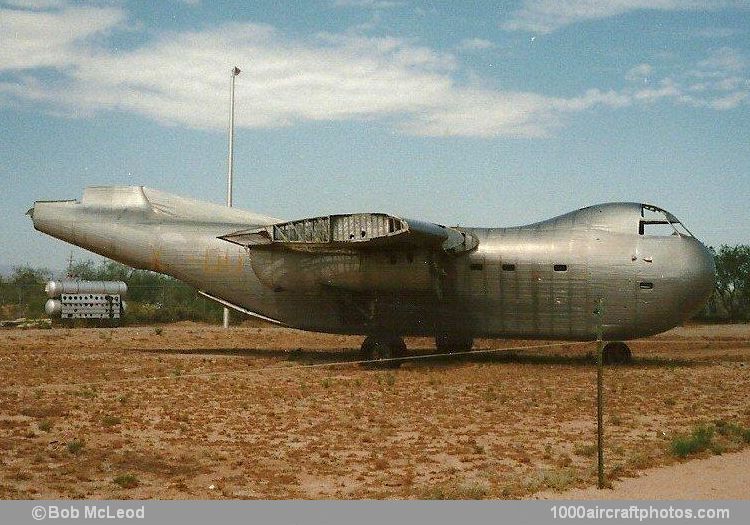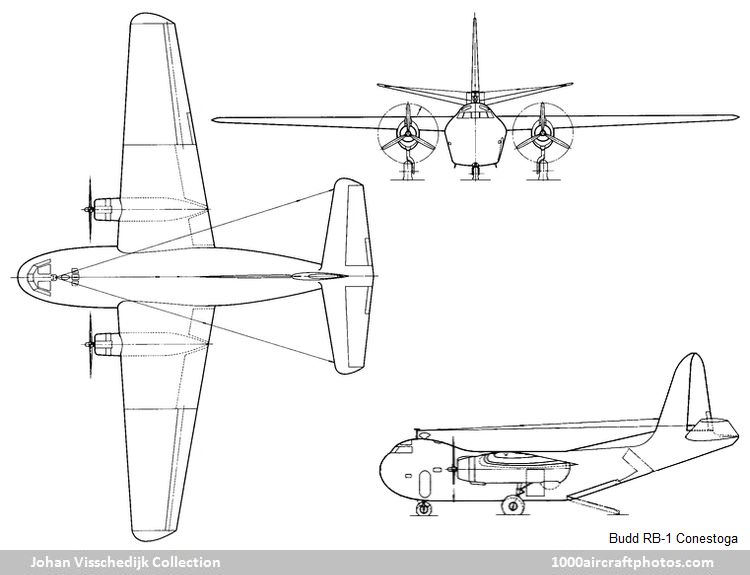W.T. LARKINS MEMORIAL COLLECTION
No. 3768. Budd RB-1 Conestoga (NC45354 c/n 012)
Photographed at Oakland, California, USA, September 1, 1948, by W.T. Larkins
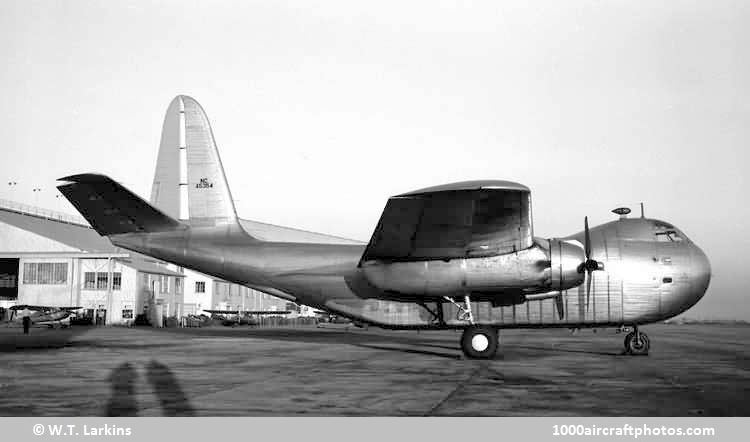
04/30/2015. Remarks by
Johan Visschedijk: "The use of high-strength stainless steel as an alternate to aluminum alloy in the construction of transport aircraft had already become a theme of Dr. Michael Watter when he joined the Edward G. Budd Manufacturing Company of Philadelphia in 1939. Budd, the developer of the stainless steel spot-welding technique, had been engaged mainly in manufacturing munitions and railway rolling stock, although in 1932 they did construct a single
amphibian of stainless steel as an example of what could be done with the spot-welding technique.
Watter, who called himself an inventor, was perhaps the first designer to attempt a 'DC-3 replacement' – though not for the usual reasons. At the time Watter had his patent applicated on July 18, 1942, it was thought that wartime demands for aluminum alloy might create a shortage for types other than first-line combat aircraft. Development of the resulting twin-engined Conestoga was sponsored by the USN, which in August 1942 ordered 200 aircraft, designated RB-1. This was followed by an order for 600 aircraft from the USAAF under the designation C-93. At one point, 774 RB-1 Conestogas were on order.
The RB-1 was designed in stainless steel, with the exception of fabric covering for the control surfaces and the rear portion of the wing skin. Intended to carry about the same payload as a DC-3 on similar power but with a greater internal volume available for cargo, it had a 8 x 8 ft (2.44 x 2.44 m) cabin cross-section, larger than the external cross-section of the DC-3 fuselage.
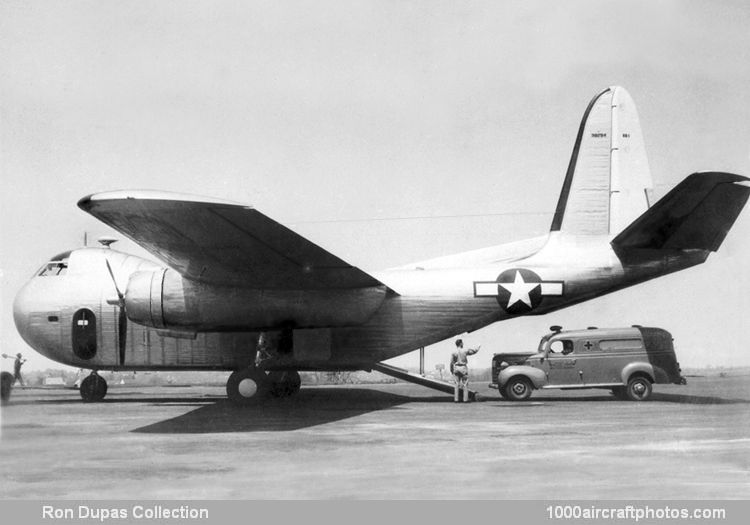
(39294) (
Ron Dupas Collection) APS No. 2895
The RB-1 also pioneered novel other features including a tricycle-landing gear, an elevated flight deck, clamshell loading doors and a rear-loading ramp under an upswept tail. Though no genuinely successful application of his idea can be readily recalled, Watter firmly believed that stainless steel used in appropriate locations in passenger and military aircraft was an economical and sensible proposition.
The RB-1 was powered by two Pratt & Whitney R-1830-92 Twin Wasp fourteen-cylinder radial engines with a take off rating of 1,050 hp, had a wing span of exactly 100 ft (30.48 m) and was 68 ft (2073 m) in length. The tail stood 31 ft (9.45 m) off the ground and wing area was 1,400 sq.ft (130.06 sq.m). Gross weight was 33,850 lb (15,354 kg), or about 1.850 lb (839 kg) above the intended design gross weight. The aircraft had a maximum speed of 197 mph at 7,000 ft (317 kmh at 2,134 m) and a normal range of about 1,700 mls (2,736 km), which could be doubled by fitting auxiliary tanks.
First flown on October 31, 1943 with Benny Howard as pilot and Gary Miller and designer Watter aboard, the prototype RB-1 (NX41810, BuNo. 39292) performed successfully.
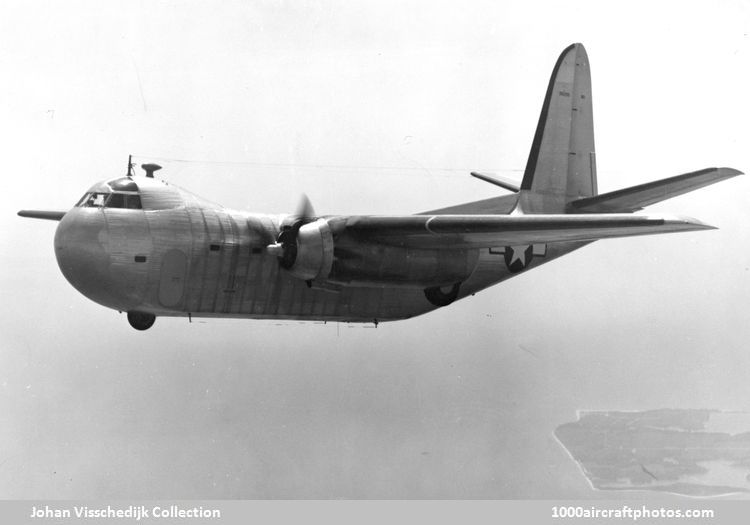
(39295) (
Johan Visschedijk Collection)
In due course, the number four RB-1 (BuNo. 39295) passed USN acceptance trials at
NAS Patuxent River, Maryland in May 1944. However, by then enough strategic materials were available for C-46 and C-47 production from several outlets, and the stainless-steel 'DC-3 replacement' was not needed. Cost increases and production delays resulted in all but 25 aircraft for the Navy being cancelled in June 1944 and in the end only seventeen were completed, these being given USN BuNos. 39292 to 39308 in addition to civil registry assignments.
Even in tragedy, the rugged potential of the RB-1 was apparent. On April 13, 1944, the second RB-1 (NX37097, BuNo. 39293) – which had already survived a belly landing – crashed at Patuxent and was wiped out. The USN test pilot said that, had it not been a stainless steel aircraft, he would never have got out of the wreckage alive. To dispose of the wreckage, USN men doused it with gasoline and set a match to it. The next day they found little changed. They had not reckoned on the durability of stainless steel vis-a-vis aluminum.
Though the RB-1 won CAA certification on July 15, 1944, by the termination of the major production order this interesting machine was thus relegated to 'limited edition' status. The seventeen aircraft completed did not enter USN service, and reportedly most went straight from the factory to storage at Augusta, Georgia. Early 1945 the extant RB-1s were transferred to the War Assets Administration and on July 5, 1945, fourteen of them were sold to the National Skyway Freight Corporation (NSFC), which in turn sold four aircraft to Shell Oil.
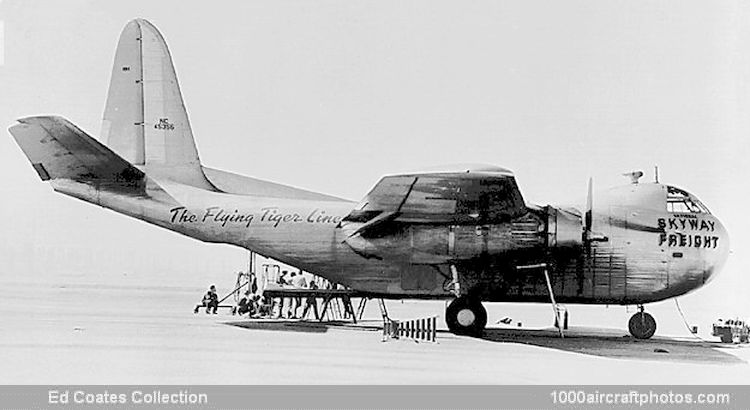
"The Flying Tiger Line" (NC45356) (
Ed Coates Collection)
NSFC was formed at Long Beach, Califronia by pilots of the 1st American Volunteer Group of the Chinese Air Force (nicknamed
"The Flying Tigers"). NSFC used the slogan "The Flying Tiger Line", which was also shown on the rear fuselage of their aircraft, and the airline became commonly known as the "Flying Tigers". The company name and the slogan became increasingly confusing, so in 1947 the airline was renamed The Flying Tiger Line Incorporated.
(XB-DUZ) Read the remarks of c/n 016 in the list below (
Johan Visschedijk Collection)
(XB-DUZ) Read the remarks of c/n 016 in the list below (
Bob McLeod Collection)
(XB-DUZ) Read the remarks of c/n 016 in the list below (
Bob McLeod Collection)
Below the known history of the individual aircraft.
Created October 25, 2004





